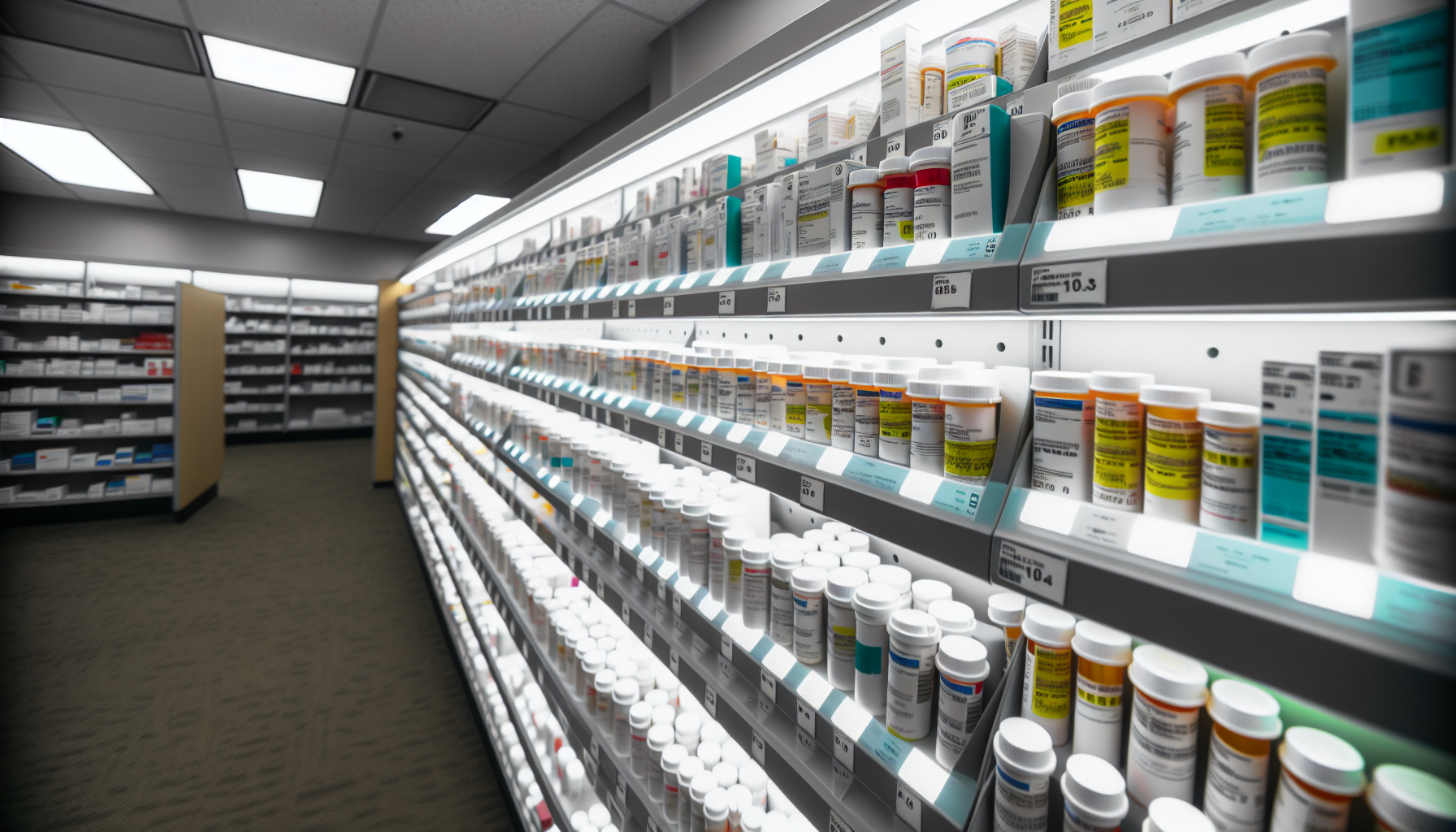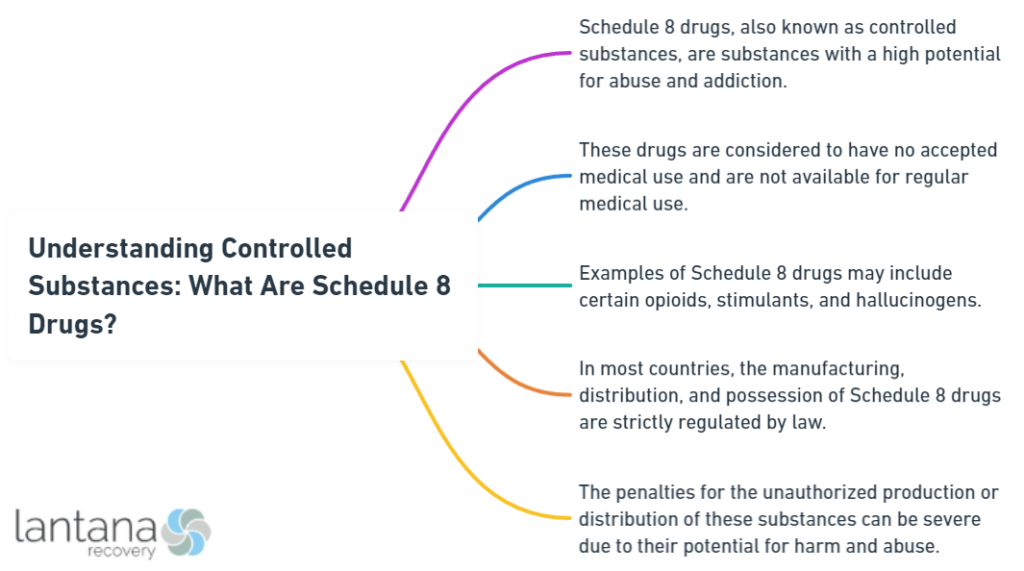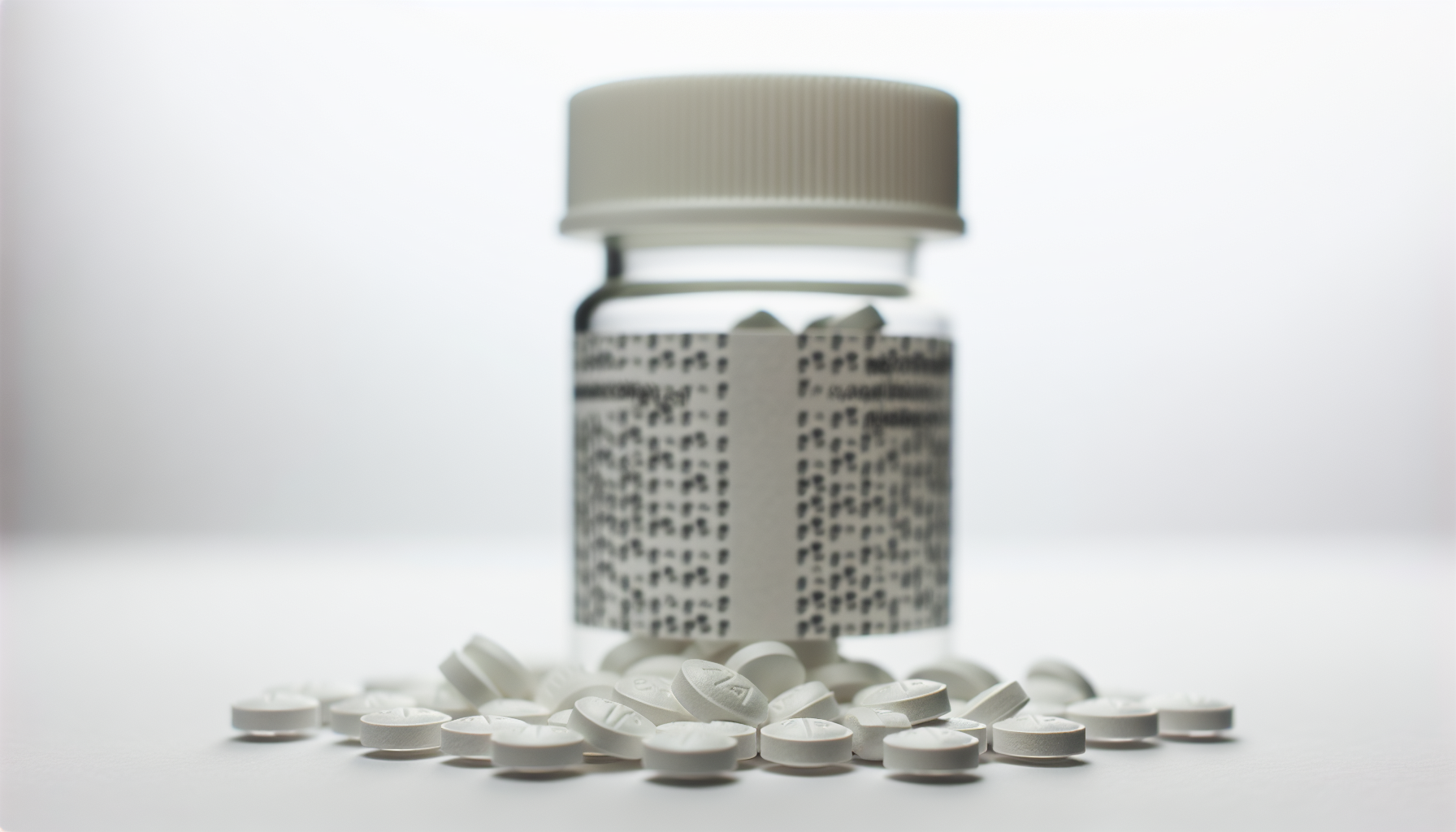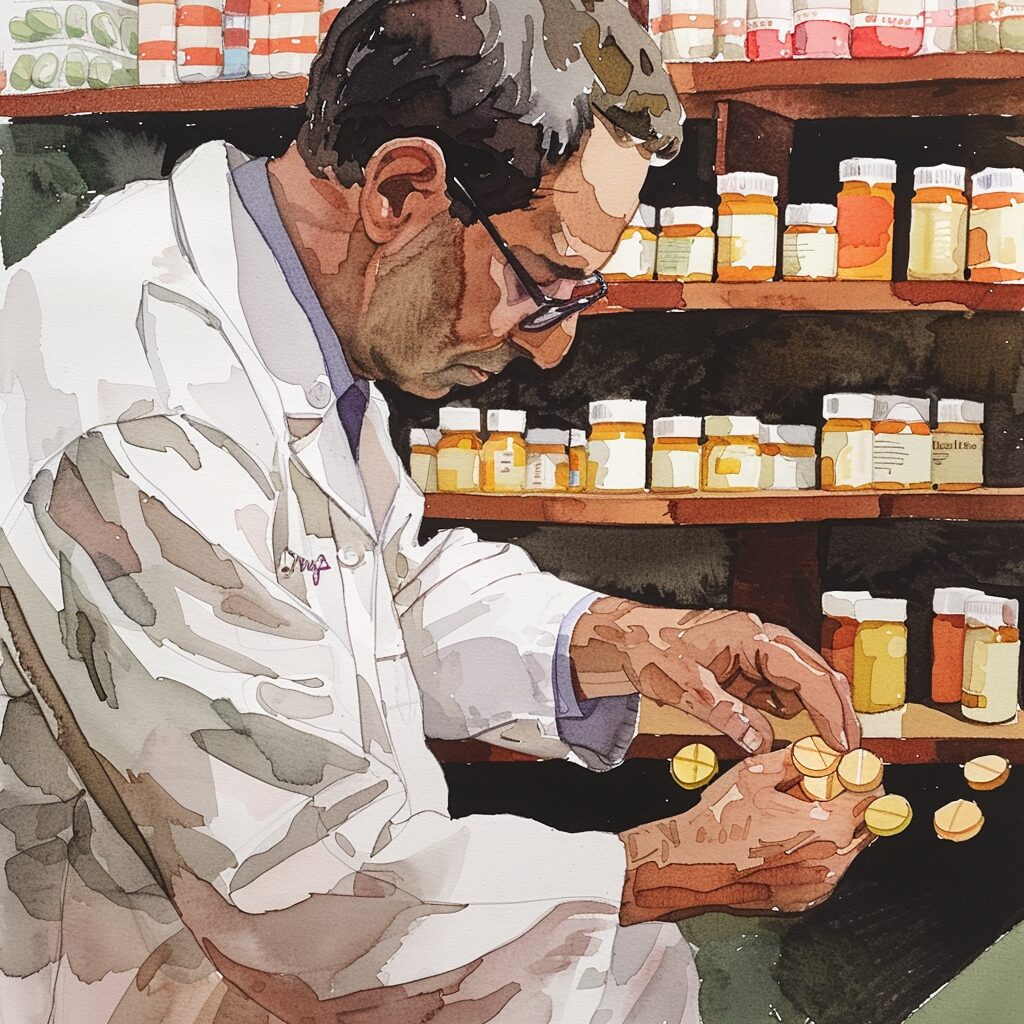Schedule 8 drugs represent a category of prescription medications with stringent legal controls, like oxycodone and methadone, due to their high risk of prompting dependency or misuse. In this guide, we explore the definition, regulatory framework, and responsible medical use of these potent drugs, providing clarity on a complex topic without overwhelming detail. So, what are Schedule 8 drugs? Let’s dive in to find out more.
Key Takeaways
- Schedule 8 drugs are controlled substances with a high potential for abuse and dependence, requiring strict regulatory oversight and are prescribed for specific medical uses such as severe pain, anxiety, and muscle building.
- Healthcare professionals, including doctors and pharmacists, have significant responsibilities in the prescribing, dispensing, and management of Schedule 8 drugs, with systems like the Schedule 8 Prescriber Information Service to oversee patient medication history and prevent misuse.
- Legal frameworks and regulations such as the Poisons Standard and permit systems guide the classification, prescription, supply, storage, and disposal of Schedule 8 drugs to ensure patient safety and restrict unauthorized access and environmental harm.
Defining Schedule 8 Drugs

Schedule 8 drugs are a special breed of controlled substances, classified under the Poisons Standard. They command additional oversight due to their potential for abuse, misuse, and the creation of physical or psychological dependence. The rationale behind scheduling such substances is to regulate their availability and usage, ensuring safety, and minimizing health risks. Some examples of Schedule 8 drugs include:
- Morphine
- Oxycodone
- Methadone
- Fentanyl
- Amphetamines
These drugs, being the only medicine of their kind, are tightly controlled and can only be prescribed by authorized healthcare professionals.
These drugs are subject to stringent controls because of their significant potential to lead to addiction. They are only dispensed by a pharmacist with a prescription, emphasizing the need for professional oversight and careful administration.
Controlled Drug Classification
The classification of a substance as a labelled controlled drug depends on a multitude of factors. These factors include:
- Medical use
- Potential for abuse
- Safety
- Likelihood of causing dependence when misused
In particular, a drug’s potential for addiction, the severity of withdrawal symptoms it may cause, and a comparison of its therapeutic usefulness against its potential for harm determine its categorization as a Schedule 8 controlled substance.
This method of classification allows for a nuanced understanding of each drug and its potential impacts, ensuring that the right safeguards are in place. It also highlights the critical role of healthcare professionals in managing these substances, as they must navigate this complex landscape while prioritizing patient safety.

High-Risk Medications
Schedule 8 drugs, deemed high-risk medications, are classified as such due to their high potential for abuse and dependence. This makes their regulation crucial to prevent misuse and illegal distribution. These drugs have a low therapeutic index, meaning there is a narrow margin between effective doses and doses that could be harmful, putting users at a higher risk of overdose. This further justifies their strict oversight.
Moreover, beyond their potential for addiction and abuse, Schedule 8 drugs can lead to severe patient harm when administered improperly or when systemic errors occur in their dispensation. It’s a delicate balance between utilizing their potent effects for treatment and managing the inherent risks they carry.
Alcohol Rehab South Carolina
If you’re seeking alcohol rehab in South Carolina, you’ll find a range of options tailored to support your journey to recovery. South Carolina boasts various rehab facilities equipped with professional staff and comprehensive programs designed to address alcohol addiction effectively. These programs often include detoxification, therapy sessions, counseling, support groups, and aftercare planning to ensure long-term sobriety. Additionally, many facilities offer personalized treatment plans to cater to individual needs and preferences. Whether you’re looking for inpatient or outpatient rehab services, South Carolina provides diverse options to help individuals overcome alcohol dependency and regain control of their lives.
Examples of Common Schedule 8 Drugs

Exploring the world of Schedule 8 drugs, we find that they are classified into various categories including opioids, benzodiazepines, and anabolic steroids. Each of these groups carries its own unique benefits and risks, making them suitable for different medical applications.
Some examples of Schedule 8 drugs include:
- Opioids like morphine, oxycodone, and fentanyl
- Hydrocodone, a cough suppressant and pain reliever
- Benzodiazepines, including drugs like midazolam
- Testosterone and its synthetic derivatives, which are anabolic steroids known for their role in muscle building.
Opioids
Opioids are a cornerstone in the management of acute or chronic moderate to severe pain. For instance, oxycodone is an opioid agonist that is prescribed when other treatments prove inadequate. Fentanyl, a potent synthetic opioid around 80 to 100 times stronger than morphine, is used both transdermally and intravenously.
Then there is morphine sulfate, frequently used for:
- moderate to severe pain
- palliative or end-of-life care
- active cancer treatment
- vaso-occlusive pain during sickle cell crises
These potent medications offer relief in cases where pain is otherwise overwhelming, demonstrating the critical role they play in healthcare.
Benzodiazepines
Benzodiazepines, another class of Schedule 8 drugs, are psychoactive drugs commonly used in the management of conditions like anxiety and insomnia. Some examples of benzodiazepines include:
- Xanax (alprazolam), used to treat anxiety disorders
- Valium (diazepam), often prescribed for anxiety
- Klonopin (clonazepam), used for seizures and panic disorders
- Ativan (lorazepam), used for managing anxiety disorders
These drugs demonstrate the diversity of applications within the family of benzodiazepines.
Short-acting benzodiazepines, such as Halcion (triazolam), are primarily used for managing insomnia, while Midazolam (Versed) is specifically used for sedation, anxiety reduction, and inducing amnesia in critical care settings or before procedures requiring anesthesia.
Anabolic Steroids
Anabolic steroids are synthetic substances that mimic testosterone, the principal male sex hormone. They are known for their role in promoting cell growth and muscle development. These substances are classified as Schedule 8 drugs because of their potential for abuse and psychological dependence.
In the medical field, anabolic steroids are used for treating conditions like delayed puberty and muscle loss from certain diseases. However, the risk of side effects and the potential for addiction have led to their Schedule 8 classification, emphasizing the need for controlled usage.
What Are Schedule 4 Drugs
“What are Schedule 4 drugs” refers to substances categorized by regulatory bodies based on their potential for abuse and medical utility. Schedule 4 drugs are considered to have a lower potential for abuse compared to those in higher schedules but still have the potential for psychological or physical dependence. Examples of Schedule 4 drugs include certain prescription medications such as benzodiazepines, which are commonly used to treat anxiety and sleep disorders. These substances are subject to stricter regulations regarding their distribution, prescription, and use compared to over-the-counter medications. It’s crucial for healthcare providers and patients alike to be aware of the classification of these drugs to ensure their safe and appropriate use.
Prescribing and Dispensing Schedule 8 Drugs

Prescribing and dispensing Schedule 8 drugs is not a task taken lightly. When health practitioners prescribe these drugs, they must follow specific regulations that determine the necessity of a permit. For instance, a permit is required for prescribing Schedule 8 drugs if the treatment extends for a continuous period greater than 8 weeks.
Additionally, the process of prescription, storage, preparation, and administration of these high-risk medications needs to be standardized to reduce potential errors. This level of regulation ensures that these powerful drugs are used responsibly and effectively.
Health Practitioner Responsibilities
Health practitioners hold the key responsibility of assessing patients before prescribing Schedule 8 drugs. They must understand the severity and nature of the patient’s condition and check the patient’s prescribing and dispensing history via the Schedule 8 Prescriber Information Service.
Ongoing monitoring and management are also crucial when patients are on long-term Schedule 8 drugs. Regular reviews and adherence to prescribing guidelines are necessary to reduce dependency risks.
Furthermore, for unregistered drugs like psilocybin or MDMA, which are sometimes used for treatment-resistant conditions, health practitioners must obtain special authorizations before prescribing.
Pharmacist Responsibilities
Pharmacists play an essential role in the supply chain of Schedule 8 drugs. They are legally obligated to:
- Ensure that the supply of these drugs is lawful
- Verify that the patient is authorized to possess the medication
- Ensure prescriptions are valid and include all necessary patient and prescriber information
Pharmacists also have several responsibilities when it comes to Schedule 8 drugs, including:
- Maintaining a drug of dependence register, recording all Schedule 8 drug transactions and storing these records for at least two years
- Forwarding original prescriptions for Schedule 8 drugs to the Drugs of Dependence Unit, unless a repeat dispensing is pending
- Enforcing secure storage of these drugs, typically keeping them in locked safes to prevent unauthorized access.
Treatment and Dependence

While Schedule 8 drugs like opioids, benzodiazepines, and certain stimulants are recognized for their significant therapeutic value in the treatment of severe pain, anxiety disorders, and ADHD, they also possess a high potential for dependence due to their psychoactive properties.
This potential for dependence impacts the brain’s reward system, leading to physical and psychological dependencies. Opioids and benzodiazepines, both Schedule 8 substances, are particularly noted for this risk. Therefore, effective management of drug treatment involves regular patient assessment, dose adjustments, and consideration of therapy duration to mitigate the risks of becoming drug dependent.
Appropriate Use in Treatment
Schedule 8 drugs are used in medical treatment for their intended therapeutic effects, such as managing pain or treating anxiety disorders. They are often the treatment of choice when alternative treatments are either ineffective or inappropriate for the patient’s specific condition.
To ensure appropriate dosing of opioids, prescribers are required to calculate morphine dose equivalents and obtain authorization when prescribing specific drugs like methadone, alprazolam, or flunitrazepam. Furthermore, anabolic-androgenic steroids like Nandrolone, another Schedule 8 drug, are used in the treatment of conditions like anemias, cachexia, osteoporosis, and breast cancer.
Managing Dependence and Addiction
The risk of dependence on Schedule 8 drugs is linked to factors such as the duration of use, dosage, and individual patient characteristics. This necessitates careful patient monitoring for signs of dependence along with the use of screening tools to identify at-risk individuals and implementing structured monitoring protocols.
Managing dependence on these drugs involves a multidisciplinary approach that includes:
- Psychological support
- Alternative pain management strategies
- Medication-assisted treatment
- Creating tapering schedules to support cessation with minimal withdrawal symptoms
For instance, co-ingestion of benzodiazepines with opioids can increase the risk of overdose, while cessation of anabolic steroids can lead to depression and continued use despite harmful consequences, which may necessitate referral to specialized addiction treatment services.
What are Benzodiazepines
“What are benzodiazepines” is a common question among those seeking to understand these medications. Benzodiazepines are a class of psychoactive drugs that act as central nervous system depressants. They are primarily prescribed to treat anxiety, insomnia, seizures, and muscle spasms due to their calming and sedative effects. These drugs work by enhancing the activity of a neurotransmitter called gamma-aminobutyric acid (GABA), which inhibits brain activity, leading to a reduction in anxiety and promoting relaxation. However, benzodiazepines also carry risks, including potential dependence, tolerance, and withdrawal symptoms upon cessation of use, which necessitates careful monitoring and management by healthcare professionals. Despite their effectiveness in managing certain conditions, they should be used cautiously and only as prescribed to mitigate the risk of adverse effects.
Legal Aspects and Regulations

Schedule 8 drugs are subject to stringent legal controls and regulations due to their high risk of addiction and abuse. Consumers must be cognizant of the legal issues and responsibilities when receiving treatment involving these medicines. Schedule 11 of the Act classifies drugs of dependence, which are known substances susceptible to misuse and trafficking..
These legal controls function as a safeguard, ensuring the responsible use of these powerful substances. They serve as a checkpoint, preventing misuse and ensuring patient safety.
Poisons Standard
The Poisons Standard provides a framework for the risk-based classification of medicines and poisons into different schedules. It is updated regularly to reflect changes in the understanding of the risks associated with different substances.
In Western Australia, for instance, health practitioners must adhere to the Schedule 8 Medicines Prescribing Code when prescribing these drugs, a legal requirement underscoring the Poisons Standard’s influence. To limit the ability of individuals to obtain these substances from multiple prescribers, a permit system was introduced in the mid-20th century.
Authority to Prescribe and Supply
Special authorities or permits are required for prescribing Schedule 8 drugs due to their high risks, with exceptions for patients in certain settings such as prisons and hospitals, or for palliative care and specific patient groups. In New South Wales, Australia, prescribers must obtain specific authorization from the Pharmaceutical Services Unit to prescribe or supply these drugs.
Different applications are necessary for authorizing the prescription or supply of these drugs such as opioids, psychostimulants, and cannabis medicines. Electronic management systems like SafeScript NSW are recommended for managing authorizations, and co-management arrangements between specialists and general practitioners are recognized, with specific circumstances requiring special permits, such as when prescribing for more than 8 weeks.
Patient Access and Safety
Patient access to Schedule 8 drugs and safety considerations are of paramount importance. The National Residential Medication Chart (NMRC) is being trialled in some residential aged care facilities to improve patient access to medications. The pilot program for the NMRC allows for the use of a copy of the chart as a prescription, which is limited to only the community pharmacy that regularly dispenses medications for that facility.
These steps aim to streamline patient access to necessary treatments while maintaining the strict regulations and safety measures associated with Schedule 8 drugs.
Controlled Drug Prescriptions
Prescriptions for Schedule 8 drugs are closely managed. Databases like SafeScript in Victoria allow health practitioners to review patients’ dispensing records before prescribing these drugs. Health practitioners, including medical practitioners and nurse practitioners, are required to check a patient’s SafeScript profile before prescribing these substances.
The Schedule 8 Prescriber Information Service provides a telephone service to assist prescribers with information about a patient’s history with these medications. Prescribers of Schedule 8 opioids must balance the need for pain relief with the potential risks of addiction, misuse, and diversion of these medications.
Storage and Disposal
Schedule 8 drugs must be disposed of in a manner that ensures they are rendered unusable and prevents unauthorized access. They must also be disposed of in a manner that is environmentally responsible to mitigate any risk to the public.
Region-specific protocols for the disposal of these drugs emphasize secure storage, supervised destruction, and meticulous recording in the Schedule 8 register. The scheduling categories, including those for Schedule 8 drugs, regulate how medicines or poisons should be labeled, sold, bought, stored, and disposed of.
Summary
Navigating the landscape of Schedule 8 drugs is a delicate and complex journey. These powerful substances carry significant potential for both therapeutic benefits and harmful misuse. From understanding the classification and examples of these drugs, to unraveling the intricacies of their prescription, treatment, and legal regulation, we’ve delved deep into the world of these high-risk medications. It’s a delicate balance of ensuring patient access and safety, while preventing misuse and addiction. As we continue to explore and understand these drugs, it’s clear that their responsible use is a shared responsibility, resting on the shoulders of healthcare professionals, lawmakers, and patients alike.
Frequently Asked Questions
What are Schedule 6 drugs examples?
Schedule 6 drugs examples include marijuana, toluene, amyl nitrite, and nitrous oxide found in various products.
What does Schedule 9 drugs mean?
Schedule 9 drugs, also known as S9 poisons, are substances strictly limited to research purposes and are prohibited from sale, distribution, use, and manufacture under the law. This includes substances like cannabis and GHB.
What items are Schedule 8?
Schedule 8 substances include Buprenorphine, Buprenorphine/naloxone, and Methadone. These substances are strictly controlled and regulated.
What are some examples of Schedule 8 drugs?
Schedule 8 drugs include opioids like morphine and oxycodone, benzodiazepines like midazolam, and anabolic steroids like testosterone. These are substances with a high potential for abuse and addiction.
What responsibilities do pharmacists have when dispensing Schedule 8 drugs?
Pharmacists have responsibilities to ensure lawful supply, verify prescriptions, maintain records, and securely store Schedule 8 drugs. These measures are crucial for regulatory compliance and patient safety.









